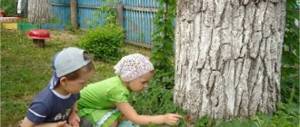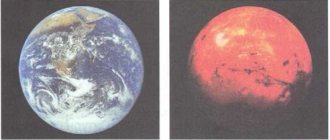Using the text of the textbook and the map (p. 61), trace Batu’s invasion of Rus'.
Batu's hordes moved to Rus' from across the Volga.
The first city on their way was Ryazan. Ryazan resisted for six days, but was captured and burned. Then Batu moved to the northwest and took the cities of Vladimir, Pereyaslavl and Rostov. The road to Novgorod opened before him, but Batu turned south.
He took the cities of Tver and Torzhok, and approached Kozelsk.
Batu spent seven weeks under this city and only then managed to take the desperately defending city.
After this, Batu returned to the steppes.
Two years later, Batu repeated the invasion, but this time he moved to southern Rus'.
He took Kyiv, Chernigov, Vladimir-Volynsky, Galich. Then he returned to his steppes.
Invasion of Batu
In 1227, Genghis Khan, the great eastern warrior, passed away. The usual redistribution of power between relatives took place. One of the grandsons, Batu, had a particularly militant character and organizational talents. He assembled a huge army by those standards (about 140 thousand people), consisting of nomads and mercenaries. In the autumn of 1237 the invasion began.
The Russian army was less numerous (up to 100 thousand people) and scattered. That is why it lost in the tragic battle on Kalka. It would seem that here is an opportunity to unite and unanimously resist the enemy. But the ruling elite of the princes continued the strife, and in Novgorod, in the north, popular unrest broke out with renewed vigor. The result was further ruin of the principalities. First Ryazan, then Vladimir-Suzdal. Kolomna, Moscow... Having ruined Vladimir, Batu went to Novgorod, but before reaching it, he turned south and went to the Polovtsian steppes to replenish his strength. In 1240, Batu’s hordes ravaged Chernigov and Kyiv, entering Europe, the Mongol-Tatar warriors reached all the way to the Adriatic. But later they stopped the war in these territories. And then difficult times came on Russian soil. The two-hundred-year yoke was established within two decades after the invasion and implied the payment of tribute by all conquered lands to the Tatar rulers. According to historians, it ended only in 1480.
Let's discuss!
Why do you think Rus' was unable to organize a worthy rebuff to Batu’s hordes?
At this time, Rus' was a disparate principality that could not unite in the face of the invaders.
And alone, Batu was able to defeat the troops of the Russian principalities.
Why did the Swedes launch an offensive in 1240? Why were they confident of success?
The Swedes were sure that Rus' would not be able to organize a rebuff against them, because on the other side, from the south, Batu Khan was walking across Rus'.
Rus' in the 13th century
In those distant times, Rus' was a fragmented country, divided into numerous principalities. There was no unity or friendly relations between them: each prince strove for sole power and was for himself. Some principalities did not have a prince at all, and were ruled by boyars - the local rich nobility.
In Rus' there was no single united army, there was no wise and strong ruler who could protect the homeland from enemies.
It is not surprising that such a large, rich country, but at the same time weakened by endless strife, was an easy prey for enemy invaders.
check yourself
Tell us about the Mongol invasion of Rus' according to plan: who the Mongols were, who led the army of conquerors, when the invaders invaded Rus', how Russian cities were defended.
A story about the Mongol invasion of Rus' according to plan for grade 4
The Mongols are nomads who emerged from the eastern steppes.
Even before the campaign against Rus', the Mongols captured many states of the East.
Then they were led by Genghis Khan.
The first meeting of Russian troops with the Mongols took place on the Kalka River in 1223.
Then the Mongols won, but did not invade Rus'.
This was just reconnaissance.
After the death of Genghis Khan, leadership of the Mongols passed to his grandson, Batu.
It was Batu who invaded Rus' in 1237.
The first city on the path of his invasion was Ryazan.
Ryazan defended itself staunchly for five days, but on the sixth it fell and was burned.
Batu marched throughout Northwestern Rus', capturing the cities of Vladimir, Rostov, and Tver.
But he did not go to rich Novgorod.
Instead, he turned south and returned to the steppes.
On the way, he besieged Kozelsk, but this city resisted the Mongols for seven long weeks, for which it was nicknamed the “evil city.”
In 1240, Batu returned to Rus' and this time captured and burned Kyiv.
He passed through fire and sword throughout Rus', and few cities remained aloof from this invasion.
Lesson No. 44. “Difficult times on Russian soil”, 4th grade
Film manual for lesson development “The World Around us” 4th grade
Lesson type:
combined
Target
the formation of a holistic picture of the world and awareness of man’s place in it based on the unity of rational-scientific knowledge and the child’s emotional and value-based understanding of his personal experience of communicating with people and nature;
Characteristics of student activities
Understand
educational objectives of the lesson, strive to fulfill them.
Trace
on the map Batu's invasion of Russia,
discuss
the reasons for the defeat of Ancient Russia during the Mongol invasion,
describe
the weapons of Old Russian and Mongolian warriors using textbook illustrations,
talk
about the Mongol invasion according to the textbook plan,
find
on the map the places of Alexander Nevsky's battles with the Swedish and German invaders.
Fill out
the “Heroic Chronicle of Russia” in your workbook.
Work
with a terminological dictionary.
Formulate
conclusions from the material studied,
answer
final questions and
evaluate
achievements in the lesson.
Planned results
Subject
Know
concepts: tribute, Batu Khan,
Golden Horde,
Alexander Nevskiy.
Why Rus' was unable to organize a worthy rebuff to the Mongol-Tatar hordes, why the Swedes began their offensive in 1240.
Be able to
retell the textbook text (about an event, historical figure, cultural monument) in your own words and discuss it in class.
Meta-subject ( Regulatory. Cognitive. Communicative)
P. - search for the necessary information to complete educational tasks using various sources.
Posing and formulating problems.
R. - independently assess the correctness of the action and make the necessary adjustments to the execution, both during its implementation and at the end of the action.
K. - formulate your opinion and position.
Personal results
The foundations of civic identity, one’s ethnicity in the form of awareness of “I” as a citizen of Russia, a sense of belonging and pride in one’s Motherland, people and history.
A broad motivational basis for educational activities, including social, educational, cognitive and external motives.
Basic concepts and definitions
concepts: tribute, Batu Khan, Golden Horde, Alexander Nevsky.
Preparing to learn new material
Let's find out how Rus' defended its independence. Using the map and illustrations, we will compare the weapons of the soldiers and describe the Battle of the Neva and the Battle of the Ice. Let's try to understand the role these events played in the history of Russia. Let's learn how to write a story about an outstanding person. Remember what you know about cities and military affairs in Rus'.
Learning new material
Hard times on Russian soil
INVASION OF BATYA
By the middle of the 12th century, Ancient Rus' broke up into separate principalities. The princes wanted to be independent and not obey anyone. The map of Rus' at that time resembles a multi-colored mosaic.
In the 13th century, difficult trials befell Rus'. From the east, from Asia, the steppe nomads - the Mongols - attacked
The Russian princes failed to unite to repel the enemy
The campaign against Rus' was led by Khan Batu. The first Russian city on the path of Batu’s hordes was Ryazan. Enemies approached its walls at the end of 1237. The Ryazan people defended themselves for five days, but on the sixth day the Mongols defeated and burned the city. Almost all of his defenders died.
In February 1238, Batu's hordes besieged and then burned Vladimir. At the same time, the invaders destroyed other cities. The chronicle says: “There was no place where they did not fight.”
The road to the rich New Year opened for Batu. However, he turned back. On the way back to the southern steppes of Batyev’s army, they fought for seven weeks near the small town of Kozelsk, whose inhabitants steadfastly and stubbornly resisted. The Mongols called Kozelsk an evil city.
The same sad fate awaited Kyiv. In 1240 it was captured and destroyed.
Almost all of Rus' was devastated by the Mongols, many Russian cities were burned. Most of the Russian lands became dependent on the Golden Horde - this is how the state of the Mongols began to be called. From now on, Rus' had to pay tribute to the Horde. The princes had to go to the khan - the ruler of the Golden Horde - for permission to own the principalities.
In the fight against Russia, the strength of the Mongols weakened. They could not subjugate all of Europe.
Russian warriors Mongol warrior
Comprehension and understanding of acquired knowledge
Working with a historical map
Using the text of the textbook and the map, trace Batu’s invasion of Rus'.
Find on the map the places of battles between Russian troops and Swedish and German invaders.
PROTECTION OF THE NORTH-WESTERN FRONTIERS. PRINCE ALEXANDER NEVSKY
A new threat has appeared on the northwestern borders of Rus'. The danger came from the Swedish invaders and the German knights of the Cross (a cross was depicted on their clothes and weapons).
The Swedes struck the first blow. In early July 1240, Swedish ships dropped anchor at the mouth of the Neva. The young and decisive Novgorod prince Alexander Yaroslavich and his retinue came out to meet them. Taken by surprise, the Swedes were completely defeated on July 15, 1240.
Battle on the Ice
For his victory on the Neva River, Prince Alexander received the nickname Nevsky.
Two years later, Alexander Nevsky, at the head of his army, defeated the crusading knights on the ice of Lake Peipsi. In history this battle remained under the name of the Battle of the Ice.
In battle, knights lined up in a wedge formation. His blow was so strong that it penetrated the strongest defenses. The foot soldiers were inside and behind the wedge. Usually they completed the defeat of the enemy. Knowing about this enemy technique, Alexander placed cavalry at the edges, and in the center - fighters armed with bows, axes, swords and hooks to pull the knights off their horses.
The battle began on April 5, 1242. It was difficult to hold back the onslaught of knights clad in heavy armor. But it turned out that the knights, having managed to crush the center of the Russian forces, themselves found themselves in a trap. Huddled together, they became easy prey. The Russian cavalry came rushing in from the sides like a whirlwind. The knights wavered and began to retreat. And here the ice began to crack. Many knights drowned in the lake due to heavy armor.
Let's discuss!
1. Why do you think Rus' was unable to organize a worthy rebuff to Batu’s hordes?
2.Why did the Swedes launch an offensive in 1240? Why were they confident of success?
Independent application of knowledge
check yourself
1. Tell us about the Mongol invasion of Rus' according to plan: who the Mongols were, who led the army of conquerors, when the invaders invaded Rus', how Russian cities were defended. 2. How did Alexander Nevsky’s leadership talent manifest itself in the Battle of Lake Peipus? 3. What is the significance of Alexander Nevsky’s victories?
Conclusion
In the 13th century, Rus' became dependent on the Golden Horde for a long time. In a time of severe disasters, we managed to defend the northwestern borders of our Motherland. Russian soldiers defeated the Swedes on the Neva River and the German crusading knights on the ice of Lake Peipsi.
Homework assignments
1. Write in the dictionary: tribute, khan, Golden Horde.
2.
Based on the illustrations in the textbook, describe the weapons of warriors: ancient Russian, Mongolian, and crusader knights.
The invasion of Batu through the eyes of ancient Russian chroniclers
Mongol invasion of Ancient Rus'
Mongol conquests (Russian) History of the Middle Ages.
Battle on the Ice . Animation
Alexander
Nevsky . Battle
on the Ice Alexander
Nevsky . Educational film
Battle
of the Ice Sources of information
:
SCHOOL OF RUSSIA Federal State Educational Standard A. A. Pleshakov textbook, E.A. Kryuchkov textbook, workbook The world around us, grade 4 Moscow “Enlightenment” 2014
YouTube
website : https://www.youtube.com/
Hosting of presentations
around the world
- https://ppt4web.ru/nachalnaja-shkola/prezentacija-k-uroku-okruzhajushhego-mira-vo-klasse-chto-takoe-ehkonomika.html
Homework assignments
Write in the dictionary: tribute, khan, Golden Horde.
Based on the illustrations in the textbook, describe the weapons of the warriors: ancient Russian, Mongolian, crusader knights.
Old Russian warrior: dressed in light chain mail, helmet, boots. In battle he used spears, swords, maces, and bows. For protection he used long shields.
Mongol warrior: used light chain mail and rode on horses. For weapons he used bows and arrows, light spears and curved sabers.
Crusader Knight: Used heavy armor and helmets that covered the body on all sides. He rode horses and used long heavy swords and long spears in battle.
presentation difficult times on Russian soil presentation for a history lesson (grades 3, 4)
Slide 2
In the 13th century, difficult trials befell Rus'. The Mongol-Tatar army came from the south. Mongol-Tatars are nomadic (moving from place to place) Mongolian tribes.
Slide 3
They were engaged in raising livestock, so they often moved from place to place in search of new pastures. The Mongols lived in yurts - light houses made of poles and felt, which were dismantled and loaded onto carts when moving.
Slide 4
The Mongols were an unpretentious and very patient people. They could not eat for 2-3 days and easily tolerated the cold. Even among themselves they rarely lived in peace and harmony, and even more so with other tribes and peoples they were constantly at enmity. There were rumors about them as cruel and ferocious people.
Slide 5
Nomadic life made every Mongol a skilled horseman and a skilled warrior. Men spent a lot of time hunting and practicing archery. Children from 2-3 years old began to ride horses and learn to shoot. The women were excellent riders and knew how to use weapons, which they always had with them.
Slide 6
In the late autumn of 1237, Genghis Khan's grandson Batu Khan led a huge army to the Russian borders. On his way lay the Ryazan principality. The people of Ryazan did not have the strength to repel such a strong enemy.
Slide 7
Ryazan Prince Yuri Ingvarevich turned to the Vladimir and Chernigov princes for help, but they did not respond to his call. Ryazan held out for five days, and fell on the sixth. All residents died.
Slide 8
Following Ryazan, the Mongol-Tatars occupied Kolomna, Moscow, Tver, and Vladimir. In February 1238, Batu captured, destroyed and burned 14 beautiful Russian cities.
Slide 9
The enemies stormed the small town of Kozelsk for 7 weeks. 4,000 enemy soldiers lay down under the walls of Kozelsk, but the city’s defenders also died. The enemies got only ruins, but Batu Khan called on them to be wiped off the face of the earth.
Slide 10
The same sad fate awaited Kyiv. In 1240 it was captured and destroyed.
Slide 11
Follow the map (p. 61 of the textbook) the sequence of Batu’s invasion of Rus'. Discuss why Rus' submitted to the Mongol-Tatars. Work in pairs
Slide 12
Why did Rus' submit to the Mongol-Tatars? There was no peace and harmony between the Russian princes: they competed with each other, since each wanted to become the main one among all. The military strength of each principality individually could not be compared with the immense strength of the Mongols.
Slide 13
Most of the Russian lands became dependent on the Golden Horde - this is how the state of the Mongol-Tatars began to be called. From now on, Rus' obeyed the orders of the khans, paid huge tribute, and was subjected to devastating raids. The khans appointed princes at their own discretion.
Slide 14
But not only the Mongol-Tatars attacked the Russian land. At the time when Batu was ravaging Rus', Alexander, the son of Grand Duke Yaroslav Vsevolodovich, reigned in Novgorod. The Novgorodians had to defend their independence from the Swedish invaders and the German crusading knights.
Slide 15
A knight is a mounted warrior protected by armor. They were called crusaders because a cross was depicted on their clothes and armor.
Slide 16
In 1240, by order of the pope, the king of Sweden sent a large army against the Novgorodians. The Swedish military leader Birger led his army to the mouth of the Neva River and sent his ambassadors to Novgorod to the young Prince Alexander Yaroslavovich. “Fight if you can. “I’m already on your land,” the ambassadors reported Birger’s words.
Slide 17
There was no time to gather strength. Alexander told his squad: “There are not many of us, but the enemy is strong. But God is not in power, but in truth: follow your prince,” and unexpectedly attacked the Swedes. The battle lasted from dawn until dark.
Slide 18
Alexander himself fought with Birger and wounded him in the face. The warrior Savva cut down the pole of Birger's tent, the tent fell, the Swedes wavered and ran to the ships on which they had sailed. The news of the victory on the Neva spread throughout Rus'. Alexander was given the nickname Nevsky for this battle. And he was only 20 years old.
Slide 19
Soon after the Neva victory, the crusaders reappeared in the Russian lands. The enemy captured Pskov and began to advance towards Novgorod. The decisive battle took place on Lake Peipsi on April 5, 1242. The battle was called the Battle of the Ice.
Slide 20
Work according to the textbook Find on the map (p. 61) the places of the battles of Russian troops with the Swedish and German invaders Read the text on p. 63 of the textbook. — How did Alexander Nevsky’s leadership talent manifest itself in the battle on the ice of Lake Peipsi?
Slide 21
Battle on the Ice. The knights built their army in a special way - their battle formation resembled a pig. In the center and on the sides stood heavily armed horsemen, behind - light cavalry and in the center - heavily armed infantry. The enemy was surrounded, breaking through his formation.
Slide 22
Knowing the tactics of the knights, Alexander led his squad onto the ice. He placed his convoy right next to the steep bank. Battle on the Ice. The main forces - the princely squad - lined up in front of the convoy. Regiments of the right and left hands were located on the flanks. On the right flank, Alexander hid an ambush regiment. Archers positioned themselves in front of the squad. The battle began with the knights attacking the center of the Novgorod army. The “pig” broke through the Novgorod system, it seemed that victory was close, but then the knights ran into a steep bank, and carts from the convoy prevented them from turning around. Taking advantage of the enemy's stop, Alexander gave the order to go on the offensive to the regiments of the right and left hands, and soon the ambush regiment struck.
Slide 23
The crusaders, who did not expect such a turn of events, wavered. Soon their retreat turned into a stampede. In some places, the melted spring ice began to crack and break. Knights in iron armor sank like stones.
Slide 24
Soon after the battle, the crusaders renounced their claims to Russian lands and sent their ambassadors to Novgorod to ask for peace. Alexander agreed to peace, but warned: “Whoever comes to us with a sword will die by the sword! This is where the Russian land stood and will stand!”
Slide 25
Let's summarize: What trials befell Rus' in the 13th century?







